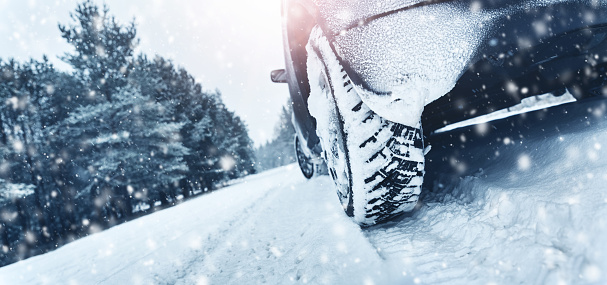When you live in an area like Northeast Ohio, roads can often get covered with snow and ice during the winter — and when those roads get covered with snow and ice, driving conditions can become significantly more challenging. To help, here are several safe driving tips to help you effectively navigate road conditions in winter weather.
#1 Get Your Car Serviced
Before winter weather hits, get your car serviced. If temperatures have already plunged, it still makes sense to have a professional look over your car to make sure it’s in good shape for cold temperatures. If you’ve bought a new car, you may want to ask how safety features, including electronic stability control and antilock brakes, will perform in snow and ice.
This is also the time to have your car battery checked and, if needed, replaced. What about your headlights, brake lights, blinkers and more?
Plus, it’s important to have reliable windshield wipers, so consider having heavy-duty winter ones installed, and make sure you have the optimal amount of windshield wiper fluid, as well.
When you start to slow down or stop your vehicle, does the brake pedal feel “soft,” not allowing you to stop as well as you once did? Have your brakes serviced, too.
#2: Maximize Your Tires
This may include buying new ones if treads on yours aren’t optimal, anymore. You may decide to switch out your tires (even if you have all-season tires) to ones specifically created for winter driving road conditions, often called “snow tires.” When temperatures are consistently at or below freezing for a period of time, Bridgestone Tires explains, rubber compounds harden in non-winter tires (including in all-season tires), which makes it more difficult for them to grip the road. With snow tires, this doesn’t happen.
Throughout the winter, maintain quality tire pressure. Your vehicle owner’s manual should list the appropriate tire pressure for your make and model.
#3 Carry A Cold Weather Emergency Kit
Keep items in your car that will help to keep you warm in cold temperatures in case your car breaks down or you get stuck in the snow. These include gloves, boots and a warm blanket. Although you hopefully won’t get stuck for a significant length of time, include bottles of water and non-perishable snacks, just in case. Make sure you have a flashlight and extra batteries, plus a flare; kitty litter to help you create traction on ice; and a first aid kit. Here’s more information about what to include in a cold weather emergency kit in your car.
#4 Additional Cold Weather Driving Tips
Keep the gas tank filled to at least halfway. This will help if you ever get stranded; and, even if you don’t get stranded, a full gas tank helps to prevent your gas line from freezing up. In wintry driving conditions, make sure your rear-window defroster is working well and, before you start driving, clear your windows from all snow, ice and condensation.
If you ever do get stuck in winter weather, it’s important to stay warm. First, don’t leave your car. Next, don’t run it for long amounts of time because that can ultimately lead to carbon monoxide poisoning. Instead, turn your car on long enough to get yourself warm and then turn it off for a period of time. Put dome lights on as well as your flare; these will help people to find your vehicle.
Here’s another cold-weather driving tip. Check outdoor temperatures before getting into the car and drive accordingly. Your tires will have more traction at 0° than 32° because roads will be less slippery. If you’ll be going out for a longer drive, check to see how much temperatures are expected to change; significant temperature drops can make driving more challenging.
Here’ a safe driving guide full of more driving tips for cold weather.










